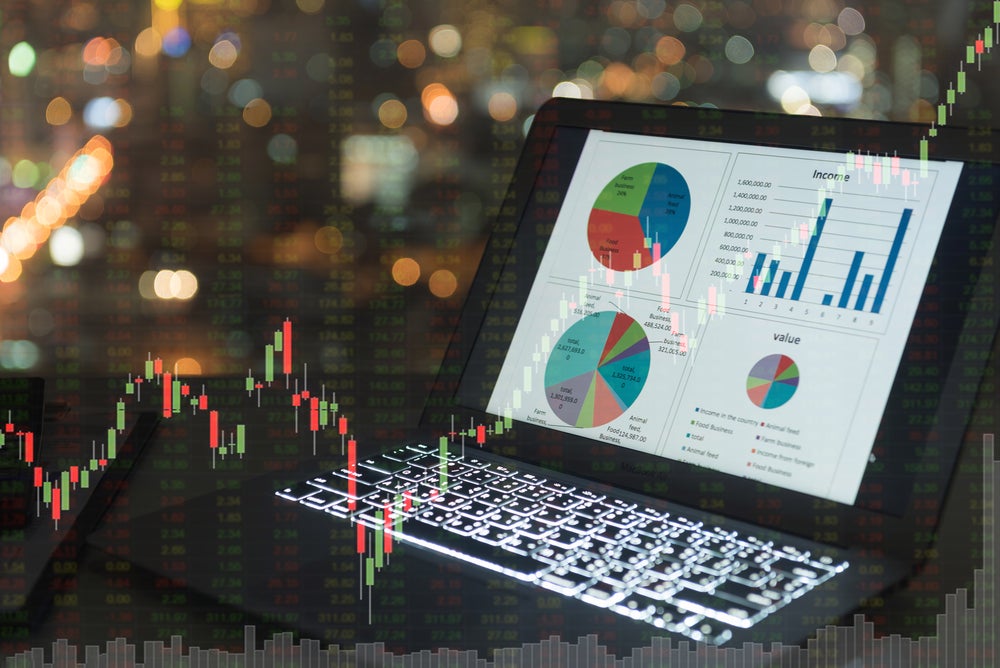
Jamie Crawley asks leading wealth managers about portfolio planning to navigating the challenging recession fears and political volatility.
With indicators showing the present economic expansion is set to end, private banks and wealth managers are challenged with cushioning their clients’ portfolios against a slowing economy and geopolitical risk at every turn.
How worried should they be? Not overly, according to Mo Choukeir, chief investment officer at Kleinwort Hambros.
“If you look at the indicators on the economic dashboard – growth, unemployment and inflation – what do you see?” Choukeir asks.
“Growth is not that great. The EU could be facing a recession, as could the UK and maybe even the US.
“However, Inflation is around the 2% mark give or take. Even in the EU it’s not that far off. So if you look at that in isolation, you have to say it’s a benign environment.
How well do you really know your competitors?
Access the most comprehensive Company Profiles on the market, powered by GlobalData. Save hours of research. Gain competitive edge.

Thank you!
Your download email will arrive shortly
Not ready to buy yet? Download a free sample
We are confident about the unique quality of our Company Profiles. However, we want you to make the most beneficial decision for your business, so we offer a free sample that you can download by submitting the below form
By GlobalData“Unemployment, however, is going gangbusters. The unemployment figures continue to impress on the global stage, with employment at a multi-year high.
“This is not an environment to be fearful. Yes, there are risks, there always will be, but there are lots of things supporting this bull market.”

Recessionary Fears?
The present economic expansion to which Choukeir refers is now one of the longest on record.
The US economy completed its 121st month of expansion at the start of July, making it the longest such run since 1854. On the one hand, this will raise concerns that a recession must surely be coming sooner rather than later, but on the other it is symptomatic of the increasing rarity with which economic downturns occur.
According to the National Bureau of Economic Research, there have been 33 recessions since 1854, or one every five years. There have, however, been only three in the last 30.
Frédrique Carrier, head of investment strategy for RBC UK, tells PBI: “Recessions are less frequent than they used to be.
“We have now safety nets, we have central banks who are perhaps a bit more professional than they were and have learned from past mistakes. And we’ve had globalisation, whereby if companies were finding that their local market was depressed, they could send goods abroad. That has really helped expanding this cycle.”

Fundamentals of economic cycles point towards this present expansion being in its later stages, owing to multiples expanding and valuations increasing.
Fahad Kamal, Kleinwort Hambros’ chief market strategist says: “We are in a pretty late stage here in terms of the bull market, but nobody in the world can tell you if this is going to last another month or another five years.
“However, according to our best assessments, we don’t think that we are heading towards an imminent collapse because multiples, while stretched, are certainly not in dangerous territory yet.
“Though, they are heading there.”
So, nothing to worry about just yet then. However, given the global uncertainty in the political sphere, there are fears that the world is altogether less well equipped to handle a downturn as and when it arrives.
At the start of 2019, there was a general consensus that the trade dispute between the US and China would have eased by now and there would be greater clarity on the Brexit dilemma. Not only do these matters rumble on, they have been added to by tensions involving Iran for its nuclear programme, and India for controversially stripping the Kashmir region of its special constitutional status.
The ramifications of geopolitical risk were brought home powerfully on the first Monday in August when US stocks plunged following the Chinese yuan dipping to below seven to the dollar. With this, Bloomberg reported that the richest 500 people on Earth lost a combined $117 billion equating to some 2.1% of their collective wealth.
The new safe havens
To navigate these turbulent seas, defensively-positioned portfolios have been increasingly adopted in private banks and wealth managers’ investment outlooks.
“We would advise clients to be very mindful of what they have in their portfolio,” Carrier tells PBI.
“Stocks with low levels of debt and strong cash flow generation tend to be better performers over the long run, particularly in times of turbulence. Underlying all of that, companies that can do this tend to have a very strong business model.
“We prefer sectors which are more defensive to those that are more cyclical. We’re overweight in staples, for example, which we see as being relatively defensive.
“And in terms of fixed income, with central banks becoming dovish, we’ve increased duration.”
Along with bonds, traditional safe havens are back in fashion. Gold has hit six-year highs in recent months and, at the time of writing, is sitting just above $1500/ounce.
But a new asset class is now being deemed a safe haven. Bitcoin’s price is up over 200% in 2019, as some institutional investors watch on with interest. One commentator went as far as to say it is becoming irresponsible to have no exposure to Bitcoin in the current climate.
Love the late cycle
Viewing the market in a very dispassionate way can help investors embrace the late-cycle environment, reducing a great deal of risk, while remaining engaged to the possibility of healthy return.
“The factors that we look at are valuation, momentum and sentiment,” says Kamal.
“Valuation is increasing, but it isn’t worrying us terribly yet. While we’re late stage, we’re not glaringly expensive.The UK, for example, has very fair valuation levels.”
Of momentum, Choukeir explains: “Trends feed on themselves. When something is gaining in popularity, people pay attention, and there is fear of missing out. So they start to buy, and that takes its price higher, and then other people start to pay attention.
“If you have negative trends, where everybody’s rushing for the exits at the same time, those tend to show the risk of losing value.”
This may seem like common sense, however Kleinwort Hambros’ approach becomes intriguing when we come to sentiment.
“If you go against the herd, you stand a good chance of generating good returns,” Choukeir explains.
“When everybody’s fearful, that’s the time to look at the asset and see if there’s a chance it’s actually undervalued, and therefore there’s a chance of making returns.
“And clearly, when something is overly euphoric, overly optimistic, there’s too much hype about it, there’s a chance that you will lose money.”
This will be seen as a difficult approach to reconcile. Fearing poor momentum, while also embracing negative sentiment would appear to be contradictory, as one so closely feeds off the other. In the current climate, for example, the largely negative sentiment could be seen to adversely affect momentum.
“They don’t all point to the same direction at the same time,” Choukeir acknowledges. “What we do is combine those risk factors and we see that actually they give you a more balanced assessment of the market.
“When they all point in the same direction, that’s the time to have high conviction.
An example of this would be the crisis in the Eurozone of 2012, where European equities were cheap, sentiment was negative, but momentum was positive thanks to the ECB’s “Whatever it takes” approach.
“You had a tick against all three of those characteristics,” Choukeir says, “and European assets performed exceptionally well in 2013 and 2014 on the back of those ripe conditions.”






